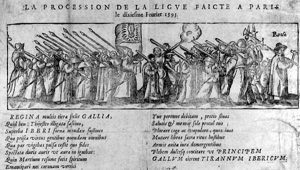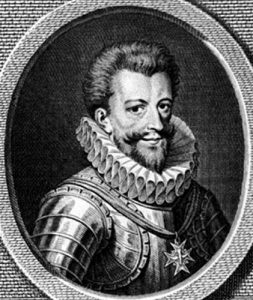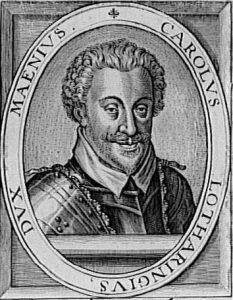Spreading of the League
The League spread all over France. The Leaguers declared they were good and loyal servants of king Henri III providing he would defend “the holy catholic Roman church”. Duke Henri de Guise organised the League in Paris, and Henri III took the lead to neutralise it.
In August 1589, upon Henri II’s assassination, the second League was organised. The leaguers considered Cardinal of Bourbon, then a prisoner of the king, as the new king under the name of Charles X. Regions where the leaguers were in equal numbers with the royals were Ile de France, Normandy, Orleans, Champagne and Lyon. More than half of the bishops adhered to the league. A general council of the Union was set up and comprised 40 members with a majority of magistrates, the Council of the Forty. The Duke of Cayenne had come back to Paris on the 12th of February, and proclaimed himself leader of the Union surrounding himself with a State Council to help him, like a king. In Paris the council of Sixteen was in charge of the police and managed to raise funds in the capital city. In each quarter a council of nine people was a link between the central institutions and the bases of the movement. The League was more common than plebeian and comprised one half of jurists, one third of tradesmen, little people being a minority with less than 10% of craftsmen. That real Committee of Public Safety exercised terror in Paris in the name of religion.
The League was a movement of revolt of the public figures in cities. The Union did not appeal to noblemen half of which opted for a wait and see attitude, waiting to see who the winner would be.
For many historians the league was authentically revolutionary, reactionary for sure, but also dissenter, that dreamt of a society based on the purity of faith.




